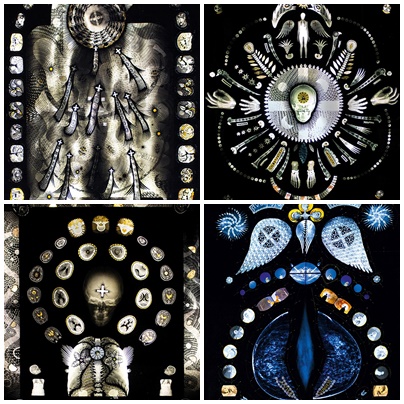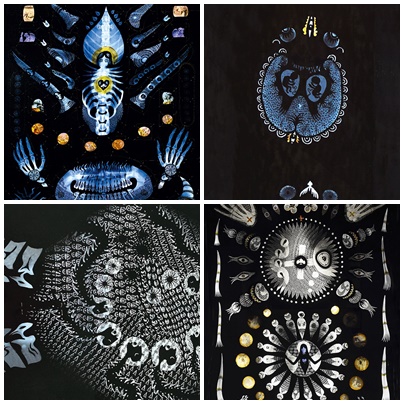"in excelsis"
Éric Benetto

GALERIE CHRISTIAN BERST
3-5, passage des gravilliers 75003 paris+33 (0) 1 53 33 01 70 e-mail:


26 January > 2 March, 2019

|

|
For Eric Benetto, born in 1972 in La Roche-sur-Yon, the discovery – at the age of 27 – of the coal miner Augustin Lesage’s mediumistic work was a veritable epiphany. His encounter with Father Coutant, who became a painter himself thanks to his friend Gaston Chaissac, marked him just as much. Profoundly meditative, fundamentally distrustful, Benetto finally understood that his feeling of exile would find an unexpected outlet in art.
While working in all manner of jobs between two trips to India – railway worker, telephone pollster, chemical plant security guard, and so many others – he began to transcribe what would become his formal grammar in travel journals. Like an uninterrupted prayer, a silent, vertiginous recitation, an obsessive graphic mantra.
Soon, India ink especially, and pencil at times, would come to conquer larger surfaces. Brown paper, at first, before he discovered, thanks to a job in a hospital, the potential of radiographs and other MRI images: simultaneous transparence and darkness in search of light. His pen, overcome by the trance, would take care of the rest.
While the patterns are repeated ad libitum and the serial incantations spread out like a primordial om, the artist gives shape to what Romain Rolland used to call the “oceanic feeling,” this formidable thirst for osmosis with the universe. In the case of Benetto, it stretches from limbo to men. Urbi et orbi. Particularly when his assemblages of magnetic resonance images are studded with the negatives of photographs of those whom he calls his “earthly family.” Or when the memorial peregrination is coupled with a redemptive impulse. And what can we say about the organs, liberated from their condition, reinvented, poeticized, sublimated.
Eric Benetto has never stopped following the most treacherous spiritual paths, from the rigors of monastic life to the ascetic practices of orthodox Hesychasm. His extreme humility nevertheless prevents him from recognizing his uniqueness, for the body of work that he has created is not only marked by an intense, syncretic mysticism, but also by exceptional moderness.
His work especially stood out in 2016 during the exhibition Art Brut in the Technological Era at the Belfort museum and is part of major collections, both of Art Brut and contemporary art.
While working in all manner of jobs between two trips to India – railway worker, telephone pollster, chemical plant security guard, and so many others – he began to transcribe what would become his formal grammar in travel journals. Like an uninterrupted prayer, a silent, vertiginous recitation, an obsessive graphic mantra.
Soon, India ink especially, and pencil at times, would come to conquer larger surfaces. Brown paper, at first, before he discovered, thanks to a job in a hospital, the potential of radiographs and other MRI images: simultaneous transparence and darkness in search of light. His pen, overcome by the trance, would take care of the rest.
While the patterns are repeated ad libitum and the serial incantations spread out like a primordial om, the artist gives shape to what Romain Rolland used to call the “oceanic feeling,” this formidable thirst for osmosis with the universe. In the case of Benetto, it stretches from limbo to men. Urbi et orbi. Particularly when his assemblages of magnetic resonance images are studded with the negatives of photographs of those whom he calls his “earthly family.” Or when the memorial peregrination is coupled with a redemptive impulse. And what can we say about the organs, liberated from their condition, reinvented, poeticized, sublimated.
Eric Benetto has never stopped following the most treacherous spiritual paths, from the rigors of monastic life to the ascetic practices of orthodox Hesychasm. His extreme humility nevertheless prevents him from recognizing his uniqueness, for the body of work that he has created is not only marked by an intense, syncretic mysticism, but also by exceptional moderness.
His work especially stood out in 2016 during the exhibition Art Brut in the Technological Era at the Belfort museum and is part of major collections, both of Art Brut and contemporary art.

|
Vernissage :
saturday january 26 from 6 to 9 pm
mpefm
FRANCE art press release
Opening Hours :
tuesday - saturday from 2 - 7 pm

QR of this press release
in your phone, tablet








